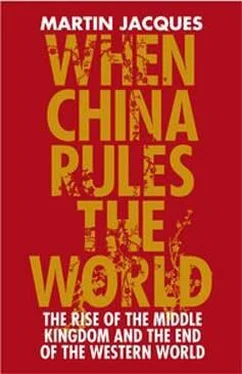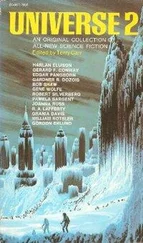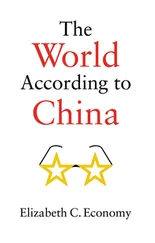Like all racial categories, the Han Chinese — a product of the gradual fusion of many different races — is an imagined group. The term ‘Han Chinese’, indeed, only came into existence in the late nineteenth century. But such has been the power of the idea, and its roots in the long history of Chinese civilization, that it has spawned what can only be described as its own historical myth, involving the projection of the present into the distant past. That myth holds that the Chinese are and always have been of one race, that they share a common origin, and that those who occupy what is China today have always enjoyed a natural affinity with each other as one big family. [709] [709] Suisheng Zhao, A Nation-State by Construction: Dynamics of Modern Chinese Nationalism (Stanford: Stanford University Press, 2004), pp. 39, 40, 166-7; W. J. F. Jenner, ‘Race and History in China ’, New Left Review , 11 (September/October 2001), p. 71.
This has become an integral part of Chinese folklore and is shared by the Confucian, Republican and Communist traditions alike. [710] [710] Peter C. Perdue, China Marches West: The Qing Conquest of Central Eurasia (Cambridge, Mass.: Belknap Press of Harvard University Press, 2005), p. 508.
A recent official Chinese publication on patriotic education declared: ‘Patri otism is a fine tradition of our Chinese nation. For thousands of years, as an enormous spiritual force, it continuously stimulated the progress of our history.’ [711] [711] Quoted in Zhao, A Nation-State by Construction , p. 40.
There is a commonly held view amongst the Chinese that Chinese civilization commenced with the Yellow Emperor (Huang Di), who, as legend has it, was born in 2704 BC and ruled a kingdom near the Yellow River on the central plain that is regarded as the cradle of Chinese civilization. Many Chinese, both on the mainland and overseas, believe that they are genealogically descended from the Yellow Emperor. [712] [712] Barry Sautman, ‘Myths of Descent, Racial Nationalism and Ethnic Minorities in the People’s Republic of China’, in Frank Dikötter, ed., The Construction of Racial Identities in China and Japan: Historical and Contemporary Perspectives (London: Hurst and Company, 1997), p. 79; and Zhao, A Nation-State by Construction , pp. 167, 171.
Although Mao rejected the idea, it has staged something of a revival since the mid eighties. In a speech in 1984, Deng Xiaoping suggested that the desire for the reunification of the mainland and Taiwan was innately ‘rooted in the hearts of all descendants of the Yellow Emperor’. [713] [713] Sautman, ‘Myths of Descent’, p. 81.
A well-known intellectual, Su Xiaokang, has written: ‘This Yellow River, it so happens, bred a nation identified by its yellow skin pigment. Moreover, this nation also refers to its earliest ancestor as the Yellow Emperor. Today, on the face of the earth, of every five human beings, there is one that is a descendant of the Yellow Emperor.’ [714] [714] Frank Dikötter, introduction to his The Construction of Racial Identities in China and Japan , p. 1.
This statement implies that the Chinese have different origins from everyone else. Like the Japanese, the Chinese have long held, albeit with significant dissenting voices, a polygenist view of the origins of Homo sapiens , believing that — in contrast to the generally held view that we all stem from a single ancestry in Africa — humanity has, in fact, multiple origins. [715] [715] W. J. F. Jenner, ‘Race and History in China ’, pp. 74-6.
Peking Man, discovered in Zhoukoudian near Beijing in 1929-30, [716] [716] www.unesco.org/ext/field/beijing/whc/pkm-site.htm.
has been widely interpreted in China as the ‘ancestor’ of the Mongoloid race. [717] [717] Frank Dikötter, ‘Racial Discourse in China: Continuities and Permutations’, in his The Construction of Racial Identities in China and Japan , p. 20; and Sautman, ‘Myths of Descent’, pp. 84-9.
In 2008 a further important discovery was made of skull fossils of a hominid — Xuchang Man — at the Xuchang site in Henan province, [718] [718] Jonathan Watts, ‘Ancient Skull Offers Clues to Origins of Chinese’, Guardian , 23 January 2008.
which was believed to date back 80-100,000 years. An article in the China Daily claimed that ‘the discovery at Xuchang supports the theory that modern Chinese man originated in what is present-day Chinese territory rather than Africa.’ It continued, ‘Extraordinary archaeological discoveries are critical to maintaining our national identity as well as the history of our ancient civilization.’ [719] [719] ‘Stirring Find in Xuchang’, China Daily , 28 January 2008.
While internationally archaeological findings are regarded as part of a worldwide effort to understand the evolution of the human race, in China, where they are given unusual prominence, they are instead seen as an integral part of national history and are used ‘to promote a unifying concept of unique origin and continuity within the Chinese nation’. [720] [720] John Reader, Missing Links: The Hunt for Earliest Man (London: Penguin, 1999), p. 111, quoted in Dikötter, ‘Racial Discourse in China,’ p. 29; Zhao, A Nation-State by Construction , pp. 168-9;and Sautman, ‘Myths of Descent’, p. 87.
Chinese historians generally describe the process of Chinese territorial expansion as one of ‘unification’ rather than ‘conquest’, with expansion being seen as a progressive evolution towards a preordained and inevitable unity. Territory, once taken, has been regarded as immutably Chinese. [721] [721] Geoff Wade, ‘Some Topoi in Southern Border Historiography During the Ming (and Their Modern Relevance)’ in Sabine Dabringhaus and Roderich Ptak, eds, China and Her Neighbours: Borders, Visions of the Other, Foreign Policy 10th to 19th Century (Wiesbaden: Harrassowitz, 1997), p. 147.
There is a powerful underlying assumption that the numerous races and nationalities have always demonstrated undivided loyalty to the imperial regimes. [722] [722] Perdue, China Marches West , pp. 510-11.
The truth, in fact, is rather different. Far from China’s expansion to its present borders being a harmonious and natural process, the realization of a nation always waiting to be born, it was in fact, as one would expect, a complicated process of war, rivalry, ethnic conflict, hegemony, assimilation, conquest and settlement. [723] [723] Zhao, A Nation State by Construction , p. 169; interview with Wang Xiaodong, Beijing, 29 August 2005; and Wade, ‘Some Topoi’, pp. 135- 57.
The embryo of contemporary China was born out of the military victory of the Qin kingdom (221–206 BC), following the Warring State period during which over 100 states fought for supremacy in north and central China. The Qin dynasty — which, prior to its triumph, roughly coincided with the present north-west province of Shaanxi — eventually emerged victorious over six other kingdoms and succeeded in expanding its territory sixfold. [724] [724] Zheng Yangwen, ‘Move People Buttress Frontier: Regime Orchestrate [ sic ] Migration-Settlement in the Two Millennia’, workshop on ‘Asian Expansions: The Historical Processes of Polity Expansion in Asia’, Asia Research Institute, National University of Singapore, 12–13 May 2006, p. 1.
During the 2,000 years that followed the Qin victory, China expanded southwards to the South China Sea, northwards to incorporate much of the steppe lands, and westwards into Central Asia. Far from this enormous geographical expansion being characterized by a natural process of fusion, peace and harmony, it predictably entailed much conflict and many wars. [725] [725] Johnston argues that Chinese military strategy, contrary to much conventional wisdom, has traditionally placed the major emphasis on what he calls a ‘parabellum’ approach — that conflict is a constant feature of human affairs; Alastair Iain Johnston, Cultural Realism: Strategic Culture and Grand Strategy in Chinese History (Princeton: Princeton University Press, 1995), pp. 249-59. Wang Xiaodong points out: ‘Chinese academics say China has a peaceful history but the Qing dynasty was very violent in its imperial expansion. When people tell you that China was peaceful, it is lies.’ Interview with Wang Xiaodong, Beijing, 29 August 2005.
Читать дальше












